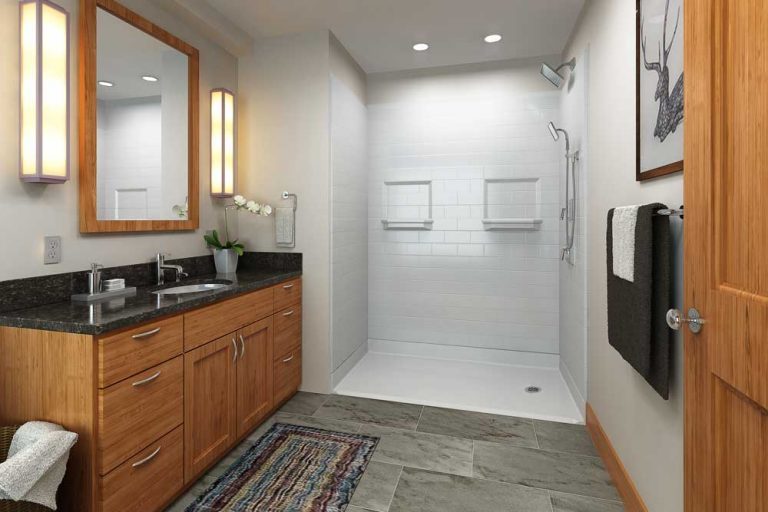
From homes to large multi-family facilities, Universal Design — also referred to as aging-in-place — has become one of the top design considerations for architects and builders. The result is that having a bathroom designed to meet accessibility requirements no longer means the bathroom will have an institutional feeling. We’ve put together four tips to consider when helping a customer plan for a home that will last them through all stages of life.

- Add grab bars. Each year, more than 230,000 people are sent to the ER because of an injury sustained while bathing, showering, or using the bathroom facilities. Adding a grab bar can significantly reduce the risk of falls and injuries — and they come in a variety of sizes and finishes that can match the bathroom design.
- Install low threshold shower pans. Reduced mobility, balance problems, and even stiff joints can make stepping into a tub/shower combo difficult. Adding a shower with a low threshold — or even a barrier free solution — can significantly improve the bathing options for homeowners.
- Choose easy to clean surfaces. Having too much grout or other rough surfaces can make a bathroom difficult to clean as people age. Look for showers and tubs that have easy to maintain surfaces. Bestbath offers a wide range of color and solid surface options that are easy to clean and can be customized to match the look of your bathroom.
- Pay attention to the details. Though we focus on building amazing showers, that’s only one element to consider in creating an accessible bathroom. As you build or design the room, give extra attention to the small details. Instead of using round door knobs, switch to lever-style designs. Add a taller toilet - a height of 18” to 19” makes it easier and more comfortable to use as the homeowners’ needs change. Finally, consider adding faucets to the sinks that are easily adjusted - stay away from knobs or consider a SmartTouch faucet.
As the population ages, home designs will continue to evolve. A recently released survey from the National Kitchen and Bath Association showed that more than three-quarters of respondents included universal design amenities, and nearly half expect to see continued growth in this area. As homeowners, architects, and builders look to include these accessible design elements, Bestbath is here to help.
